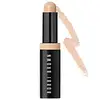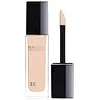What's inside
What's inside
 Key Ingredients
Key Ingredients

 Benefits
Benefits

 Concerns
Concerns

No concerns
 Ingredients Side-by-side
Ingredients Side-by-side

Glyceryl Triacetyl Ricinoleate
EmollientOctyldodecanol
EmollientBis-Diglyceryl Polyacyladipate-2
EmollientOzokerite
Emulsion StabilisingKaolin
AbrasivePolyethylene
AbrasiveCI 77120
Cosmetic ColorantCalcium Aluminum Borosilicate
Caprylic/Capric Triglyceride
MaskingTocopheryl Acetate
AntioxidantSalicornia Herbacea Extract
Skin ConditioningCommiphora Mukul Resin Extract
Skin ConditioningCoffea Arabica Seed Oil
MaskingLecithin
EmollientBHT
AntioxidantPhenoxyethanol
PreservativeCI 77891
Cosmetic ColorantCI 77491
Cosmetic ColorantCI 77492
Cosmetic ColorantCI 77499
Cosmetic ColorantCI 77163
Cosmetic ColorantGlyceryl Triacetyl Ricinoleate, Octyldodecanol, Bis-Diglyceryl Polyacyladipate-2, Ozokerite, Kaolin, Polyethylene, CI 77120, Calcium Aluminum Borosilicate, Caprylic/Capric Triglyceride, Tocopheryl Acetate, Salicornia Herbacea Extract, Commiphora Mukul Resin Extract, Coffea Arabica Seed Oil, Lecithin, BHT, Phenoxyethanol, CI 77891, CI 77491, CI 77492, CI 77499, CI 77163
Water
Skin ConditioningC9-12 Alkane
SolventCaprylic/Capric Triglyceride
MaskingPropanediol
SolventGlycerin
HumectantPolyglyceryl-6 Polyricinoleate
EmulsifyingDicaprylyl Ether
EmollientPentylene Glycol
Skin ConditioningSilica
AbrasivePolyglyceryl-10 Decaisostearate
EmollientSynthetic Fluorphlogopite
Trimethylsiloxysilicate
EmollientIris Florentina Root Extract
MaskingPolyglyceryl-2 Isostearate
EmulsifyingDisteardimonium Hectorite
StabilisingSodium Myristoyl Glutamate
CleansingStearalkonium Hectorite
Gel FormingSodium Chloride
MaskingButylene Glycol
HumectantLecithin
EmollientHydroxyacetophenone
AntioxidantSodium Benzoate
MaskingPropylene Carbonate
SolventPolyhydroxystearic Acid
EmulsifyingHydrolyzed Viola Tricolor Extract
Skin ProtectingAluminum Hydroxide
EmollientParfum
MaskingTocopherol
AntioxidantIsostearic Acid
Cleansing1,2-Hexanediol
Skin ConditioningCaprylyl Glycol
EmollientPolyglyceryl-3 Polyricinoleate
EmulsifyingAchillea Millefolium Extract
CleansingXanthan Gum
EmulsifyingTropaeolum Majus Flower/Leaf/Stem Extract
Skin ConditioningCitric Acid
BufferingPotassium Sorbate
PreservativeCI 77891
Cosmetic ColorantCI 77491
Cosmetic ColorantCI 77492
Cosmetic ColorantCI 77499
Cosmetic ColorantWater, C9-12 Alkane, Caprylic/Capric Triglyceride, Propanediol, Glycerin, Polyglyceryl-6 Polyricinoleate, Dicaprylyl Ether, Pentylene Glycol, Silica, Polyglyceryl-10 Decaisostearate, Synthetic Fluorphlogopite, Trimethylsiloxysilicate, Iris Florentina Root Extract, Polyglyceryl-2 Isostearate, Disteardimonium Hectorite, Sodium Myristoyl Glutamate, Stearalkonium Hectorite, Sodium Chloride, Butylene Glycol, Lecithin, Hydroxyacetophenone, Sodium Benzoate, Propylene Carbonate, Polyhydroxystearic Acid, Hydrolyzed Viola Tricolor Extract, Aluminum Hydroxide, Parfum, Tocopherol, Isostearic Acid, 1,2-Hexanediol, Caprylyl Glycol, Polyglyceryl-3 Polyricinoleate, Achillea Millefolium Extract, Xanthan Gum, Tropaeolum Majus Flower/Leaf/Stem Extract, Citric Acid, Potassium Sorbate, CI 77891, CI 77491, CI 77492, CI 77499
 Reviews
Reviews

Ingredients Explained
These ingredients are found in both products.
Ingredients higher up in an ingredient list are typically present in a larger amount.
This ingredient is an emollient, solvent, and texture enhancer. It is considered a skin-softener by helping the skin prevent moisture loss.
It helps thicken a product's formula and makes it easier to spread by dissolving clumping compounds.
Caprylic Triglyceride is made by combining glycerin with coconut oil, forming a clear liquid.
While there is an assumption Caprylic Triglyceride can clog pores due to it being derived from coconut oil, there is no research supporting this.
Learn more about Caprylic/Capric TriglycerideCi 77491 is also hydrated iron III oxide. It's sole purpose is to give a red/pink hue to products.
Iron III oxides are classified as inorganic chemicals for coloring.
Synthetically created Ci 77491 is considered safer than those naturally found. This is because the synthetically created version may contain less impurities. Iron oxides are generally non-toxic and non-allergenic.
Learn more about CI 77491Ci 77492 is also hydrated iron III oxide. It's sole purpose is to give a yellow hue to products.
Iron III oxides are classified as inorganic chemicals for coloring.
Synthetically created Ci 77492 is considered safer than those naturally found. This is because the synthetically created version may contain less impurities. Iron oxides are generally non-toxic and non-allergenic.
Learn more about CI 77492Ci 77499 is also hydrated iron III oxide. It is created from mixing red and black iron oxides. This helps give shades of darkness to a product.
Iron III oxides are classified as inorganic chemicals for coloring.
Ci 77891 is a white pigment from Titanium dioxide. It is naturally found in minerals such as rutile and ilmenite.
It's main function is to add a white color to cosmetics. It can also be mixed with other colors to create different shades.
Ci 77891 is commonly found in sunscreens due to its ability to block UV rays.
Learn more about CI 77891Lecithin is a term for a group of substances found in the cell membranes of plants, animals, and humans. They are made up of mixture of phospholipids.
This ingredient has emollient and emulsifying properties.
As an emollient, lecithen helps soften the skin and creates a barrier to keep moisture in.
As an emulsifier, it also helps prevent water and oil ingredients from separating. Lecithin can also help ingredients be better absorbed by the skin.
This is because the phospholipids in lecithin produce liposomes. Liposomes help other ingredients get through the skin barrier.
Depending on the source of this ingredient, lecithin may not be fungal acne safe. This is because some sources of lecithin come from soybean oil, which may feed the malassezia yeast that feeds fungal acne.
We recommend reaching out to the brand you are purchasing from to inquire about the source of their lecithin.
Some other names for this ingredient include soy lecithin and deoiled soy lecithin.
Learn more about Lecithin